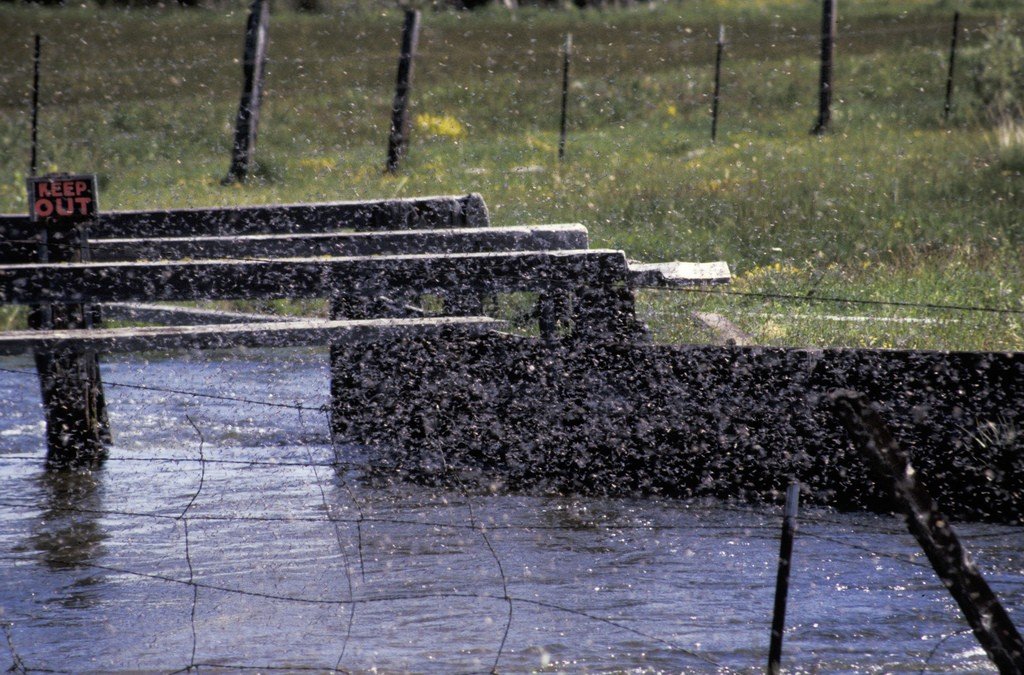At a California gas station the ground covered with the tiny winged insects. Heaps of carcasses, running inches deep, are brushed to the sides.
On the highway, they rained onto car windscreens. They flew in thousands toward even the tiniest sources of light, and move stealthily along kitchen tables and windows.
Such has been the stark reality for the past couple of months in the communities at the base of the Sierra Nevada’s eastern hill, where inhabitants have seen a sudden surge of the red-and-black seed insect species Melacoryphus lateralis.
Such epidemics have been experienced in Arizona’s Sonoran desert next to Tucson, but researchers say it’s the first one they have been recorded in California.
According to David Haviland, an entomologist with the University of California Cooperative Extension in Kern County, the invasion has been triggered by extreme weather and a mild winter, which provided tastier plants for the nutrient-sucking insects.
According to Nathan Reade, agricultural commissioner for Inyo and Mono counties, the insects’ flight toward homes, towns, cars and businesses might be associated with the drying up of indigenous plants in the drought and the heat of summer.
To the north, a different kind of bug is swarming the site of the well-liked Burning Man counterculture carnival in Nevada’s Black Rock Desert. State officers are working to classify the green, coin-shaped bugs swarming the open-air venue and biting employees setting up for this year’s occasion, which begins August 30th.
Jeff Knight, an Entomologist, with the Nevada Department of Agriculture, said the insects aren’t parasites and don’t pose any health risk.
In California, the explosion of fingernail-sized seed insects is the main subject of conversation in the bug-ridden communities.
A publication in a Lone Pine motel hall warned customers to shut their doors tight, and a hotel employee advised clients to keep their vehicle windows up, especially if lights are on. An Inyokern Dollar General Store started closing after nightfall to avoid dealing with the hoards of insects.
Rest areas and Gas stations along Highway 395 are major insect targets because of their lighting. After nightfall, the bugs whirl like bizarre artwork below the overhead lights of the gas stations.
According to Haviland “the amount of biological control is really insignificant compared to the millions of insects that are out there.”
So for the moment residents will have to take cover and hope winter comes quickly.
Stay Connected